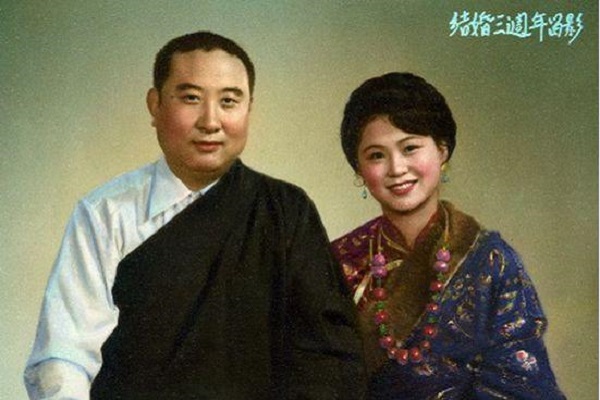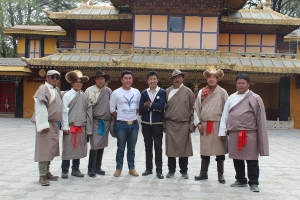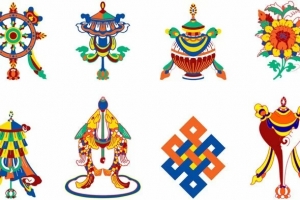The Dalai Lama and the Panchen Lama are two important leaders in Tibetan Buddhism, specifically within the Gelug Sect, also known as the Yellow Sect. The Dalai Lama is considered the reincarnation of a revered figure, Avalokitesvara, who is associated with compassion. On the other hand, the Panchen Lama is thought to be the reincarnation of the Infinite Light Buddha, a symbol of wisdom.
Both lamas play significant roles in guiding their followers, but they have different levels of status and responsibilities. Additionally, their histories are distinct. It’s important to note that the central government also has a say in recognizing both leaders, which adds another layer to their roles within the community.
Status
The Dalai Lama is the top leader of the Gelug Sect of Tibetan Buddhism and is widely seen as one of the key spiritual figures in Tibetan Buddhism. He is believed to be the reincarnation of the compassionate Bodhisattva Avalokitesvara and has held this leading position in Tibet since the 17th century.
The Panchen Lama is technically positioned above the Dalai Lama in the religious hierarchy. However, since the Ming and Qing Dynasties, the Dalai Lama has been given political power in addition to his spiritual role. Over time, the Panchen Lama has tended to focus more on spiritual matters rather than political ones, which has allowed the Dalai Lama to gain more recognition and influence within the Buddhist community.
The Panchen Lama is the second-highest leader in the Gelug Sect, but his role is generally less powerful than that of the Dalai Lama. Despite this, he still plays an important role in Tibetan Buddhism.

Dalai in Beijing
Temple Where
The Dalai Lama’s primary residence is the iconic Potala Palace, a stunning architectural marvel nestled in the heart of Lhasa, the capital city of Tibet. Perched on a hilltop, this magnificent structure serves as a spiritual centre and a historical symbol of Tibetan Buddhism. The Potala Palace was originally constructed in the 7th century and has since become a UNESCO World Heritage Site, attracting visitors from around the globe. It contains numerous chapels, halls, and ornate rooms filled with artistic treasures and sacred relics, offering a glimpse into Tibet’s rich cultural and religious heritage.
In contrast, the Panchen Lama resides at Tashilhunpo Monastery in Shigatse, the second largest city in Tibet. Founded in the 15th century by the first Dalai Lama, Tashilhunpo Monastery is renowned for its impressive assembly of monastic buildings and its significant role in the Gelug school of Tibetan Buddhism. The monastery is also famous for its large statue of Maitreya Buddha, which stands 26 meters tall, making it a prominent destination for pilgrims and tourists alike. Tashilhunpo serves as a religious site and a learning and community centre for Tibetan Buddhists.
Election Method
Finding a new Dalai Lama is an important tradition in Tibetan Buddhism. It starts with searching for a young boy who is believed to be the reincarnation of the previous Dalai Lama. High-ranking spiritual leaders look for special signs and clues that point to the boy’s location.
Once a potential candidate is found, he is usually a young child who shows qualities similar to those of the former Dalai Lama. This boy then begins his religious education, getting ready to take on the role of Dalai Lama, where he will lead and guide the Tibetan people spiritually.
Similarly, selecting the Panchen Lama’s successor follows a comparable method. The Panchen Lama is considered the second-most important spiritual figure in Tibetan Buddhism. Like the Dalai Lama, a young boy is identified through signs indicating he is the next in line. After being recognized, this child also receives training in spiritual teachings to prepare him for the responsibilities of being Panchen Lama. This process emphasizes the importance of spiritual heritage in Tibetan Buddhism, connecting past and future leaders of the faith.

Panchen X and His Wife
Political Role
Historically, the Dalai Lama has been an important spiritual and political leader in Tibet, playing a key role in the region’s culture and governance. The Dalai Lama gradually stepped back from political duties after the Chinese government took control of Tibet in 1950. This change reached a turning point in 2011 when he officially handed over his political powers to the Central Tibetan Administration’s elected leaders, often called the Tibetan government in exile and operating from India. The Dalai Lama focuses on spiritual leadership, preserving Tibetan culture, and advocating for peace and humanitarian issues worldwide. He is seen as the representative figure for about ninety per cent of Tibetans, both inside Tibet and in communities abroad.
On the other hand, the Panchen Lama has a more specific and local role in Tibetan Buddhism and politics. Traditionally, the Panchen Lama’s responsibilities include managing religious matters, leading the monastic community, and promoting religious education among Tibetans. The Panchen Lama has had a smaller political role than the Dalai Lama. Currently, the Panchen Lama looks after the spiritual needs of about ten per cent of the Tibetan population. This position has become controversial because the Chinese government appointed someone who many believe serves as a political tool, which raises concerns about the freedom of religious practices and the preservation of Tibetan culture under Chinese rule.
The differences between the Dalai Lama and the Panchen Lama come from their unique historical and religious backgrounds. These leaders play important roles in Tibet and have helped keep Tibetan Buddhist culture and traditions alive. You’ll often see statues or pictures of the Dalai Lama and the Panchen Lama in Tibetan homes and temples. Many Tibetans describe their relationship beautifully, comparing it to the sun and the moon in the sky, each shining in its own right but together creating a harmonious balance.










